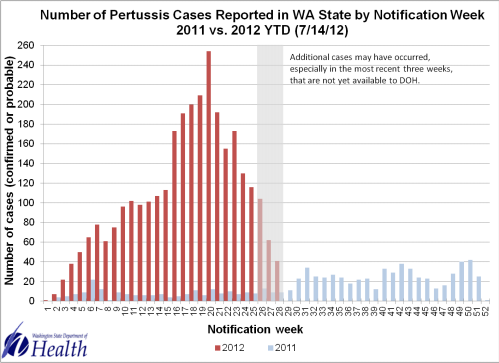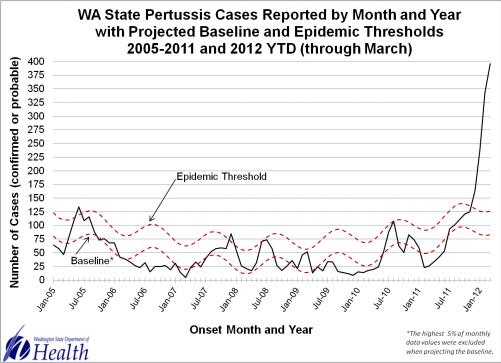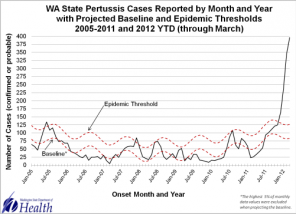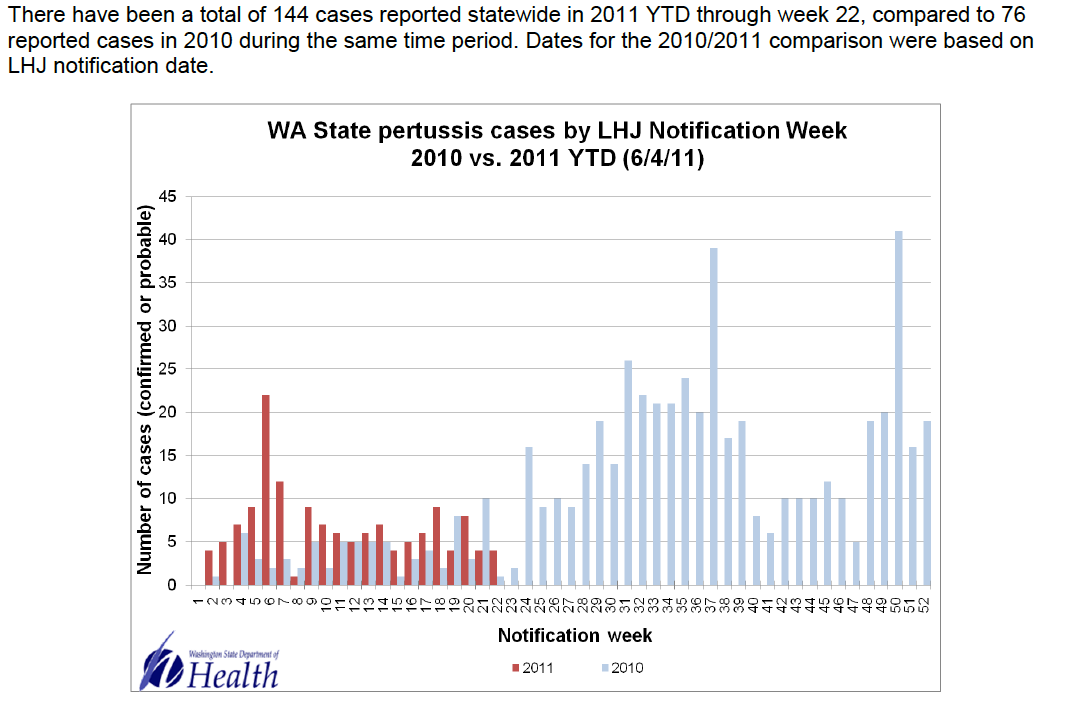The good news is that no lives have been lost to whooping cough (pertussis) in Washington State in 2012. “It’s a miracle a baby hasn’t died in our state yet this year,” admitted State Health Officer Dr. Maxine Hayes. But 39 infants have had to be hospitalized. Whooping cough can lead to pneumonia, or even seizures, but it can be treated with antibiotics. Infants are most at risk because the vaccination is delivered in stages: at two, four, and six months of age, then at 15 to 18 months, and culminating in fifth shot at four to six years of age.
As you can see from the chart above, whooping cough has exploded from its edging-into-epidemic levels of last year, and Washington has yet to face the fall and winter. The CDC’s report on Washington’s epidemic records a 1,300-percent increase in the number of cases, the worst outbreak in the state since 1942–but that was as of June 16.
The state’s Department of Health issues a weekly pertussis update, and a month later, in mid-July (pdf), the number of cases had risen to 3,014. That’s compared to 219 over the same period last year. It’s all too similar to the epidemic that hit California, which topped out at 9,156 cases in 2010, with about 600 infants hospitalized and ten deaths. (Last year, California saw about 3,000 cases, and in 2012, just 169 so far–but pertussis outbreaks have three-to-five-year peaks and valleys, so that abrupt fall doesn’t mean California is out of danger.)
California’s highest incidence rate was 45 cases per 100,000 people; in 2012, Washington’s overall rate is 44.8 per 100,000–but Skagit County has an incidence rate of 440 per 100,000.
What’s new is that, nationally, vaccinated 13- and 14-year-olds are contracting whooping cough in greater numbers, indicating that the childhood DTaP vaccine‘s protection is wearing off sooner than expected. (DTaP is the “newer” pertussis vaccine, which the U.S. switched to in the early ’90s because reactions to it are far less frequent and severe.) After about five years, it appears, DTaP’s effectiveness drops to about 70 percent. This isn’t a huge problem–anyone can get a booster shot if they’re worried.
It’s worth noting that even if the DTaP vaccine doesn’t prevent whooping cough in all cases–studies gauge its effectiveness in prevention at somewhere between 60 and 90 percent, depending on a number of factors, including how many shots you’ve gotten–it still results in less severe cases, that don’t last as long, and aren’t as contagious. (Perversely, this could also have promoted the rise of the perception that pertussis is just a bad cough, and not that much to worry about.)
Despite the common-sense tactic of “cocooning”–keeping anyone who so much as sneezes away from infants–the single most common source of a baby’s whooping cough is its mother. Pregnant and post-partum women should get a booster shot if they need one. You can get the vaccine at a number of locations, including pharmacies, and 27,000 shots have been made available for Washington’s uninsured–which seems disproportionate given that some 1,000,000 people in Washington have no health insurance.



